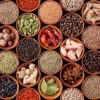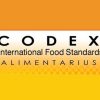IFAC Agrees with EFSA Re-Affirming Safety of Cellulose
A recent scientific opinion from the European Food Safety Authority (EFSA) on the re-evaluation of celluloses as food additives confirmed previous conclusions that celluloses are safe, and that there are no concerns or issues at reported-use levels.
Cellulose is a non-digestible carbohydrate that is naturally present in many plant foods. Cellulose is also used to thicken and stabilize a variety of prepared foods. Celluloses have been approved for use in foods and beverages for decades and have recently been re-examined as part of the European Commission’s broader re-evaluation mandate.
EFSA’s Panel on Food Additives and Nutrient Sources added to Food (ANS) conducted the re-evaluation on various forms of celluloses, which was last completed in 1989. The ANS Panel evaluated the following forms of cellulose:
Microcrystalline cellulose
- Powdered cellulose
- Methyl cellulose, ethyl cellulose
- Hydroxypropyl cellulose
- Hydroxypropyl methyl cellulose
- Ethyl methyl cellulose
- Sodium carboxy methyl cellulose
- Enzymatically hydrolysed carboxy methyl cellulose
- Cross-linked carboxy methyl cellulose
Due to the similarities in structural, physicochemical and biological properties, the Panel was able to determine all celluloses are safe based on the data submitted. According to EFSA’s opinion, research that included animal and human data confirmed there are no safety concerns at the current levels being consumed through celluloses that are naturally present and those that are modified for use in food applications. Additionally, the Panel concluded there was no need to set an acceptable daily intake level or ADI for cellulose, given there is no safety concern with the reported uses and use levels in food.
IFAC fully supports the conclusion found by the EFSA Panel and hopes this evaluation will provide more clarity to food manufacturers and consumers who may be concerned with various celluloses found in their food. Celluloses provide naturally-sourced benefits in foods like ice cream, dressings, sauces, some types of bread and processed meats.
Learn more about the functions and benefits of cellulose and cellulose gum in foods here.




 naturally-occurring ingredients. In 2013, James Kennedy, a renowned chemistry teacher and blogger, published a poster series called the “
naturally-occurring ingredients. In 2013, James Kennedy, a renowned chemistry teacher and blogger, published a poster series called the “
 Codex brings together over 400 member nations and recognized non-governmental organizations (NGOs) to establish nutrition, safety and trade standards that are reflective of sound science and fair trade practices. These standards help local farmers and smaller nations gain access to foreign markets while helping to guarantee safety for consumers everywhere. Food producers that wish to export their products to foreign markets can follow Codex standards to ensure safe growing, processing, packaging, testing and shipping practices, while knowing their products will be accepted in most national markets around the world. This helps promote international food trade and protect consumers in the increasingly globalized food supply chain.
Codex brings together over 400 member nations and recognized non-governmental organizations (NGOs) to establish nutrition, safety and trade standards that are reflective of sound science and fair trade practices. These standards help local farmers and smaller nations gain access to foreign markets while helping to guarantee safety for consumers everywhere. Food producers that wish to export their products to foreign markets can follow Codex standards to ensure safe growing, processing, packaging, testing and shipping practices, while knowing their products will be accepted in most national markets around the world. This helps promote international food trade and protect consumers in the increasingly globalized food supply chain.